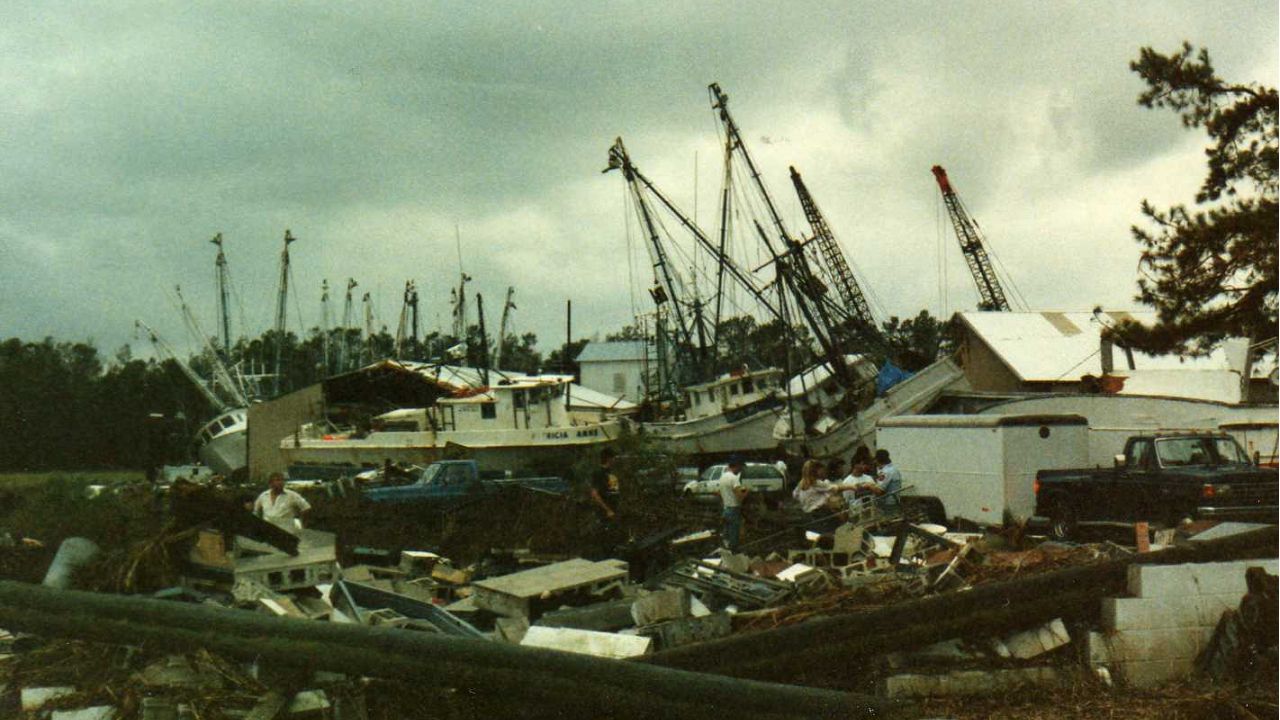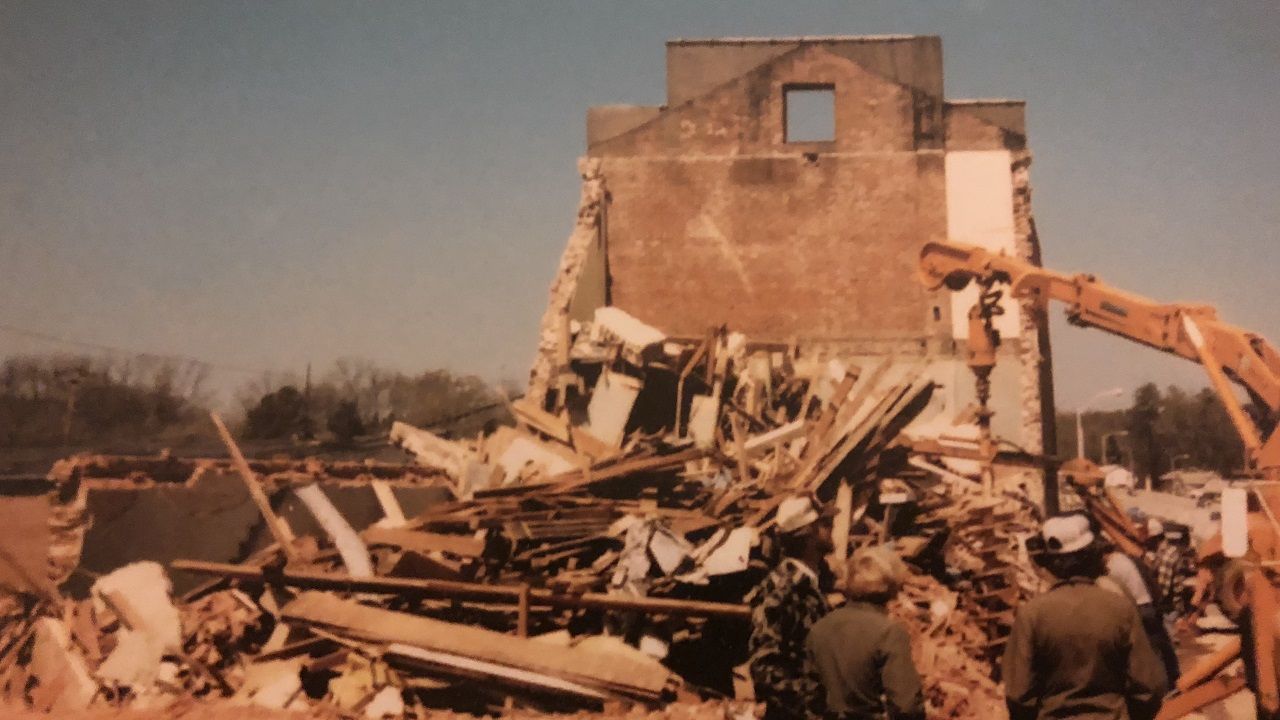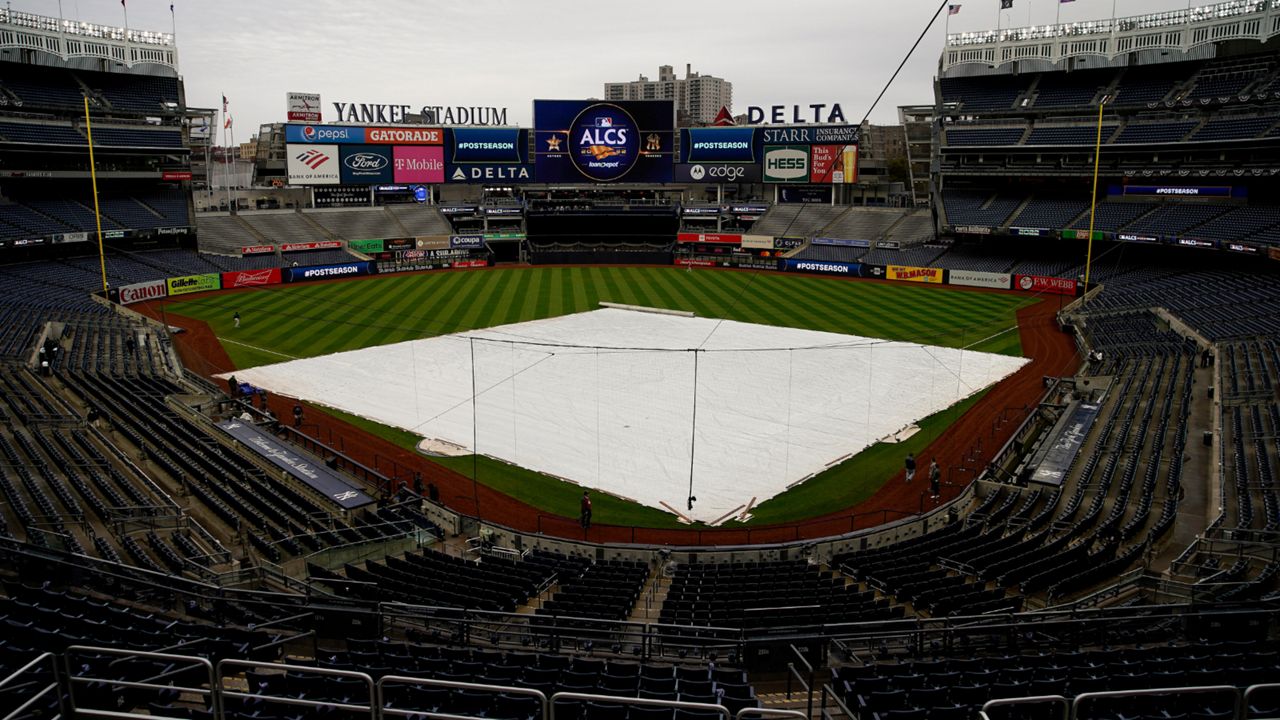It has now been 33 years since Hurricane Hugo devastated much of the coast of South Carolina.
Hugo was a Category 4 hurricane with estimated sustained winds up to 140 mph when it came inland during the early morning hours of Sept. 22, 1989, near McClellanville, S.C.
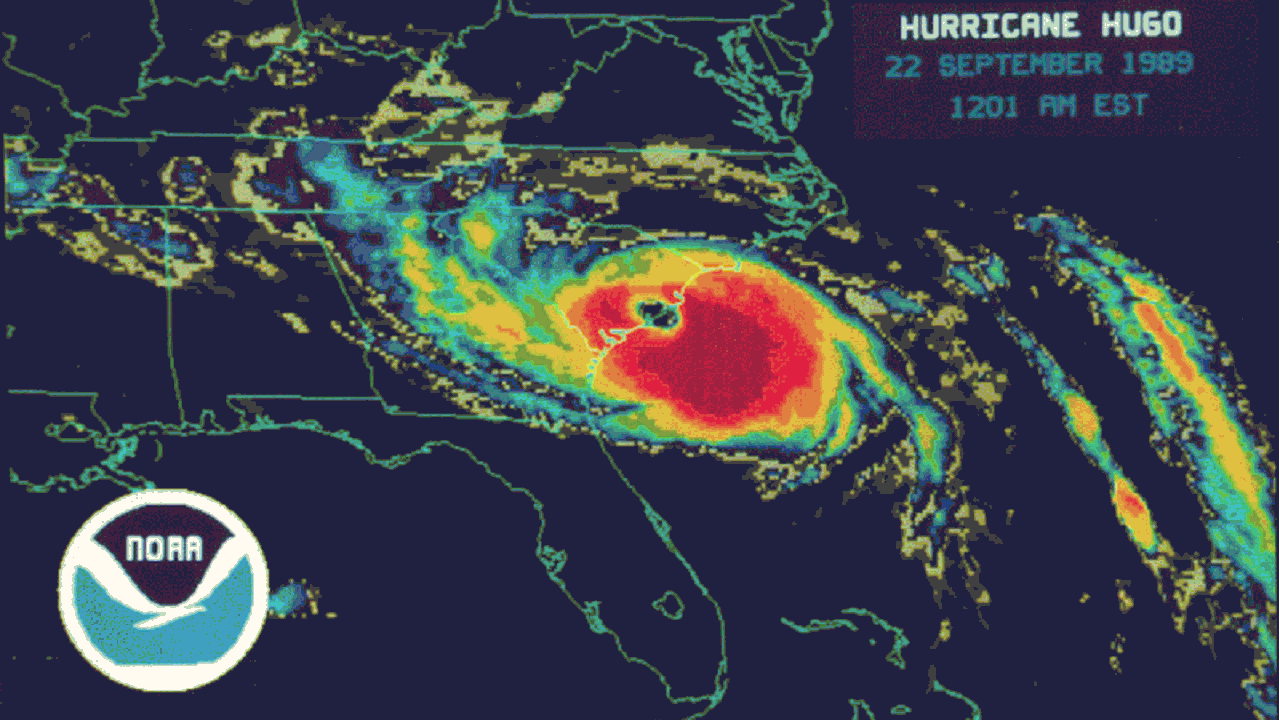
Hugo produced a 16-foot storm surge in McClellanville. A high school in the small coastal town had been selected as a shelter because maps showed it was at an elevation of 20 feet. It was actually just 10 feet above sea level, and six feet of seawater rushed into the school, where around 400 people were seeking shelter.
Eyewitness accounts say people became trapped and climbed on top of tables and chairs to avoid drowning.
Wind gusts up to 108 mph occurred in nearby Charleston, damaging around 80% of roofs in the city. Over 100 buildings in Charleston were severely damaged or destroyed.
Along the North Carolina coast, Hugo damaged at least 25 beachfront homes at Holden Beach and completely washed away seven to eight-foot dunes. The storm also destroyed a 50-foot section of the Carolina Beach pier.
Hugo did not only impact coastal areas. The storm produced hurricane-force winds as it moved over Charlotte.
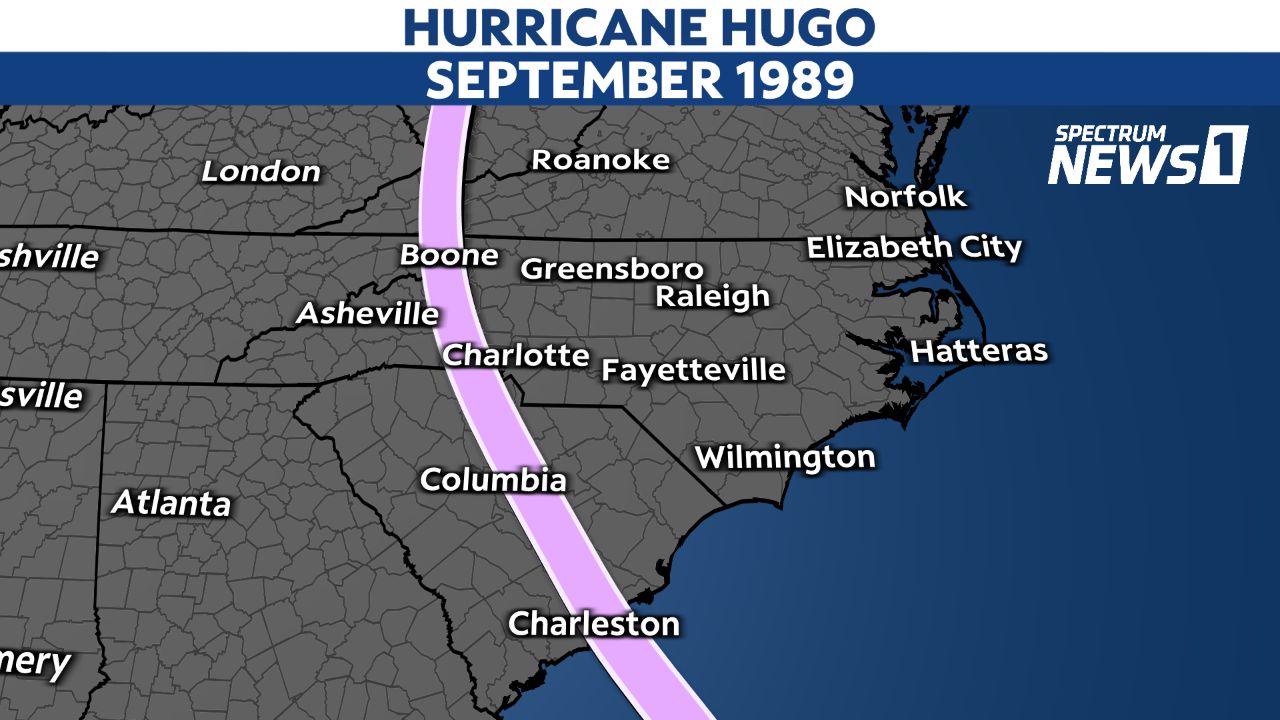
Wind gusts in the Queen City reached up to 100 mph. Around 85% of the city lost power. Windows from skyscrapers in Uptown were blown out and came crashing down on nearby streets.
There were numerous downed trees and widespread power outages across the western Piedmont and Foothills of North Carolina.
Our team of meteorologists dives deep into the science of weather and breaks down timely weather data and information. To view more weather and climate stories, check out our weather blogs section.





